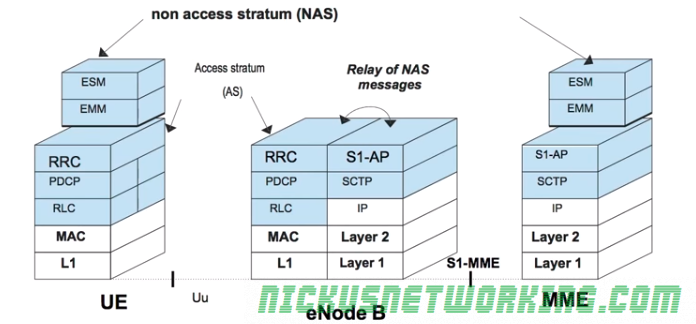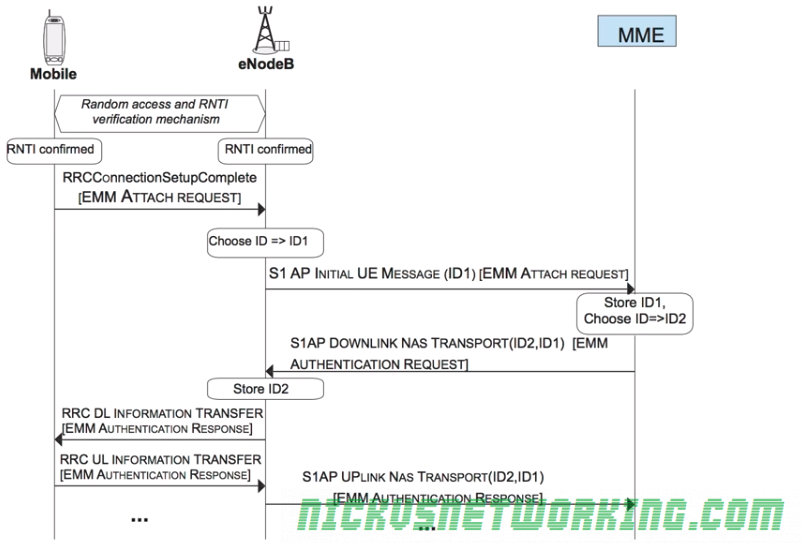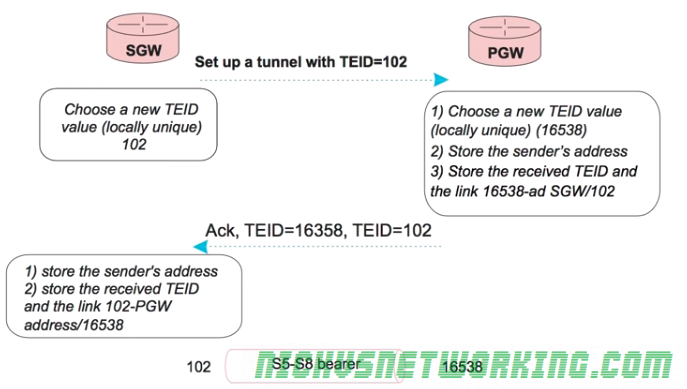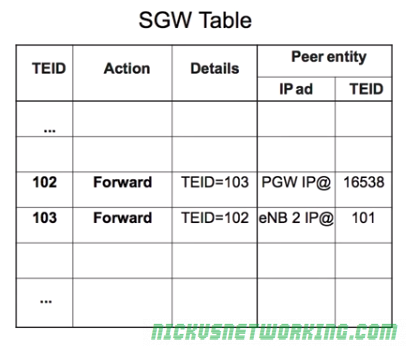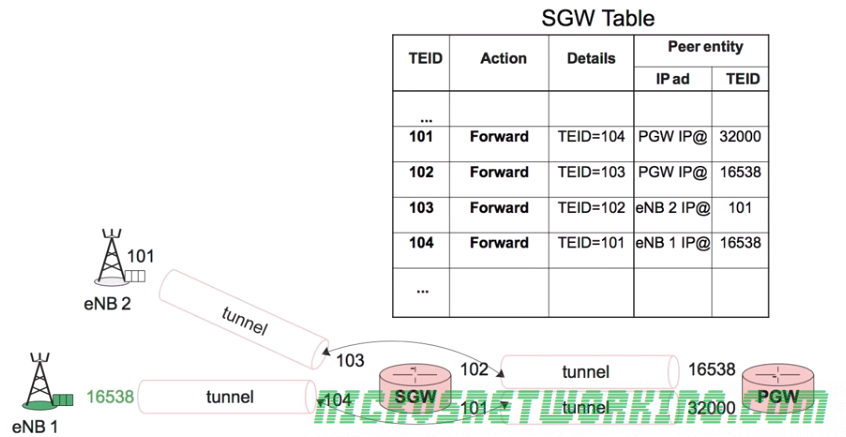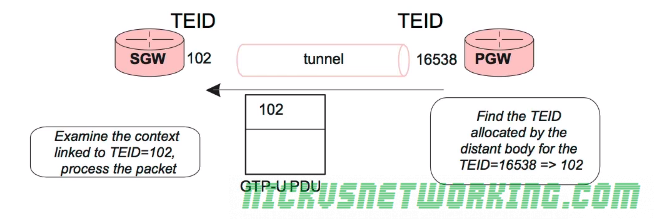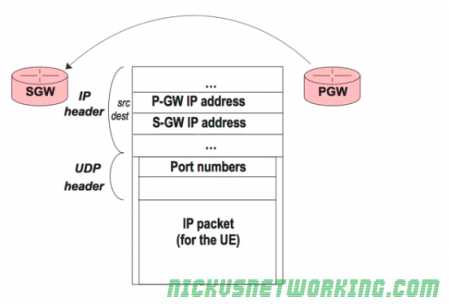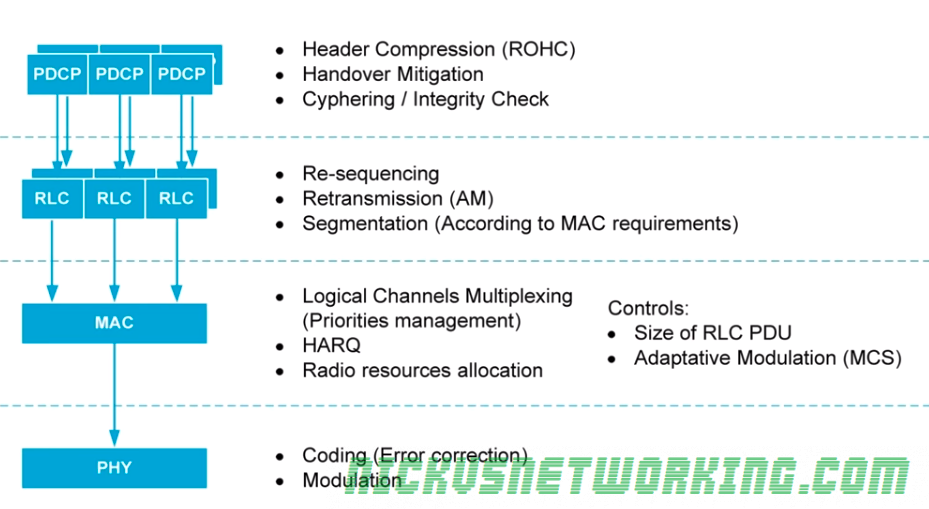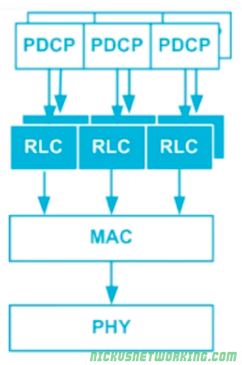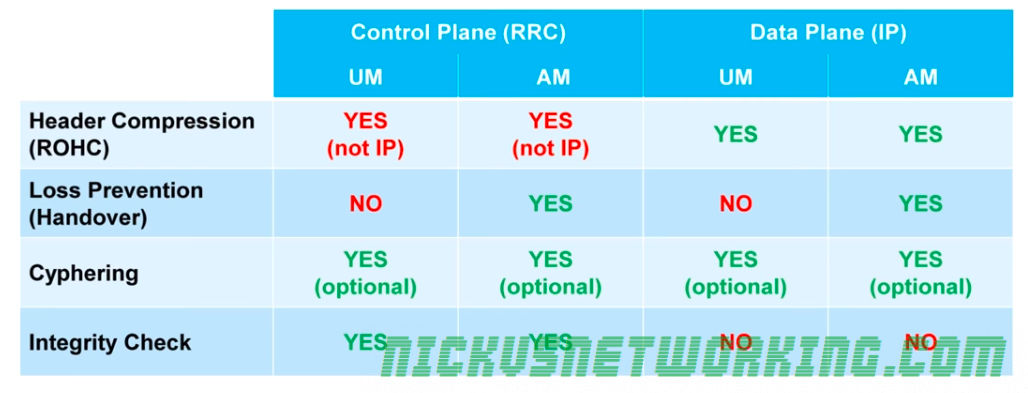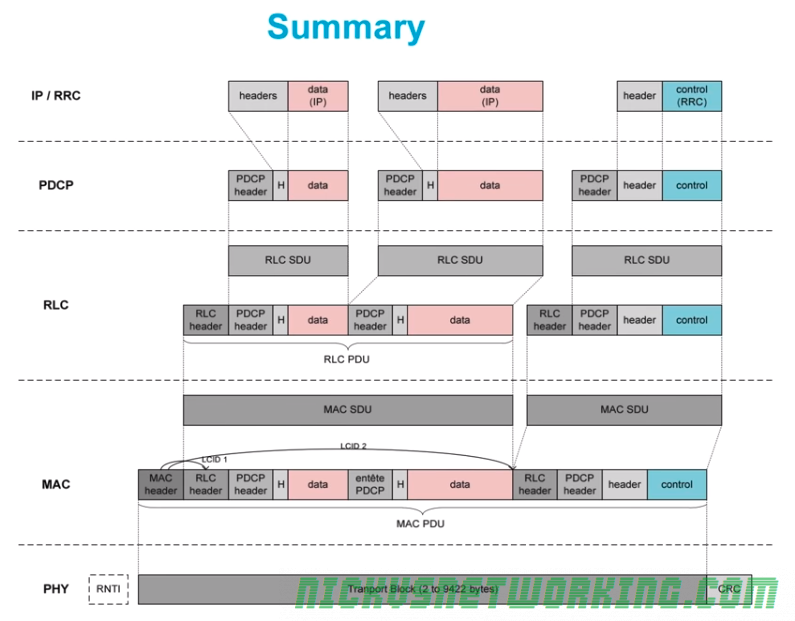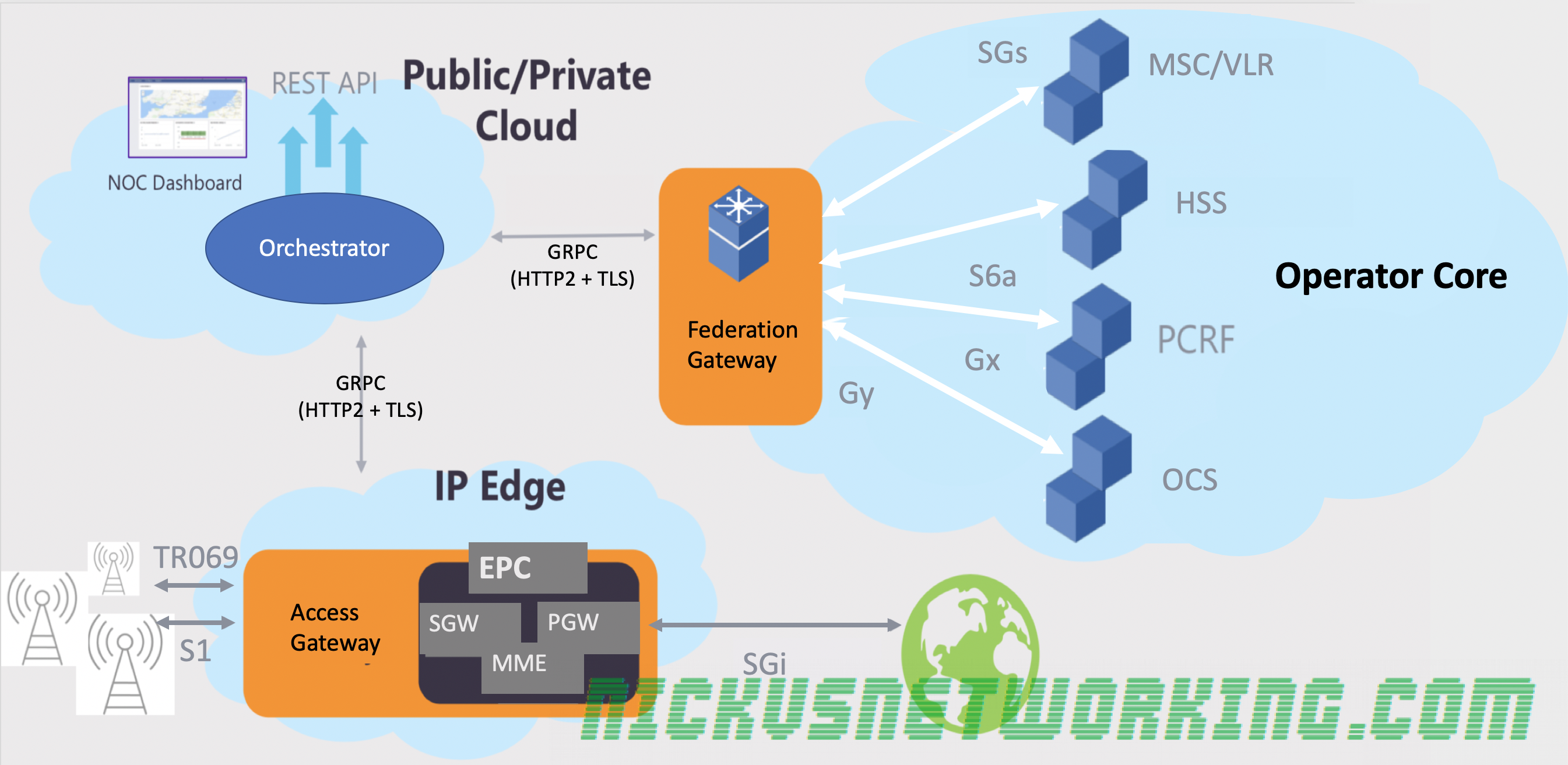These are my lecture notes from IMT’s NET02x (4G Network Essentials) course, I thought I’d post them here as they may be useful to someone. You can find my complete notes here.
A LTE UE has permanent IP connectivity for as long as it is connected.
As soon as the UE powers up it requests the establishment of one or more bearers for it’s IP connectivity through GTP tunnels.
An EPS Connectivity Request message is sent by the UE.
The network needs to know if a UE can be reached or not, so the network must store state for each terminal,
EPS Session Management (ESM) manages EPS bearer contexts.
EPS Mobility Management (EMM) has two states – EMM-Registered (UE reachable) and EMM-Deregistered (UE not reachable).
A UE is in the deregistered state when it is not rechable, for example not currently powered up or in flight mode.
The MME memorizes the state of each UE and it’s context elements such as it’s most recent GUTI, IMSI, security parameters etc.
Attach Procedure
To attach to the network a UE sends an EMM Attach Request with it’s most recent GUTI to the MME.
In the same request the UE also includes an ESM PDN Connectivity Request to gain access to the external networks.
The Authentication & Key Agreement procedure is followed between the UE and the MME/HSS to authenticate the network and the subscriber.
One this is done the MME looks at the connectivity requested and the APN of the subscriber, the MME then selects a Serving-Gateway and Packet-Gateway based on the APN.
The MME then sends a GTP-C Create Session Request along with the connectivity requested (IPv4/6), APN and IMSI of the subscriber and it’s allocated TEID for this tunnel to the S-GW.
The S-GW also sends a GTP-C Create Session Request along with
the connectivity requested (IPv4/6), APN and IMSI of the subscriber to the P-GW, along with the S-GW’s allocated TEID for this tunnel too.
The P-GW then sends a GTP-C Create Session back to the S-GW containing it’s TEID and it also includes the IP Address to be allocated to the UE.
A GTP session is now setup between the P-GW and the S-GW for this bearer, with the TEID values added to the TEID management tables on both devices. This GTP tunnel is referred to an S5 (home) or an S8 (roaming) Bearer in 3GPP parlance.
Another GTP-C Create Session message with it’s own TEID is also sent from the S-GW to the MME.
The MME, S-GW and P-GW now each know TEID for each of the 2 tunnels setup (MME<->S-GW, S-GW<->P-GW) so have what they need to fill their TEID management tables.
When the MME recieves the GTP-C Create Session with the IP Address for the UE it sends an EMM Attach Accept and a EPS Bearer Context Setup Request containing the IP Address the P-GW allocated to the UE to the UE itself.
The UE stores the allocated IP and sends an acknowledgement to the MME in the form of an EMM Attach Complete message back to the MME.
The MME sends a GTP-C Modify Bearer Request which transfers the bearer setup between MME and SGW and modifies it to be between the SGW and the eNB.
The S-GW sends back a GTP-C Modify Bearer Complete message and modifies the GTP tunnel to be between the SGW and the eNB. A S1 bearer is now established for carrying user data from the eNB to the SGW.
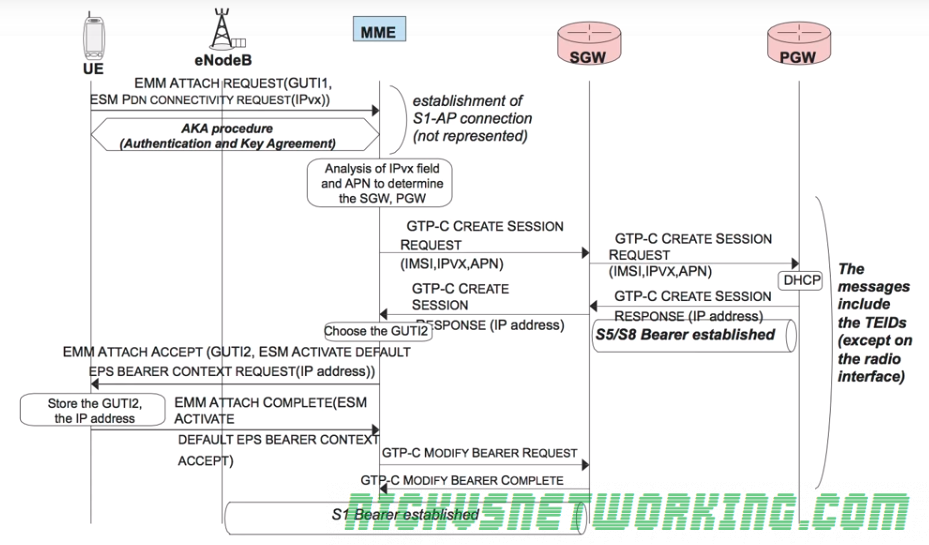
Once this procedure is complete the UE is now in the EMM Registered State meaning it is known to the MME, it has a security association and has an IP Address.
The S-GW and the P-GW also stores the TEIDs for the UE.
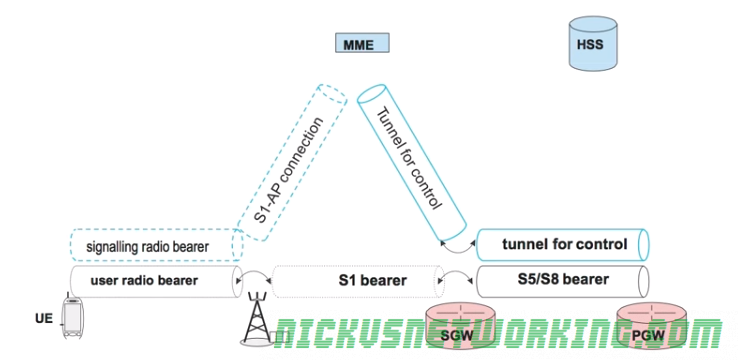

Detach Procedure
When a UE detaches from the network (for example it powers down), the network must release all the tunnels for that UE, the MME state must be updated to EMM Deregistered and the MME must also keep a record for the last GUTI and security keys,
To detach from the network the UE sends a RLC UL Information Transfer message containing an EMM Detach Request which includes it’s current GUTI.
As soon as the UE recivers confirmation from the eNB the UE can power down, but the eNB must inform the network of the disconnection so the resources can be released.
The eNB sends a S1Ap Uplink NAS Transport message containing a EMM Detach Request with the UE’s GUTI to the MME.
The MME can then release the security context,
The MME then sends a GTP-C Delete Session Request to the S-GW.
Upon recipt of this request the S-GW requests the P-GW tears down it’s tunnel between the P-GW and S-GW (aka the S5/S8 Bearer) by sending it’s own GTP-C Delete Session Request to the P-GW.
Once the S-GW has confirmation the tunnel has been taken down (In the form of a GTP-C Delete Session Response) the S-GW sends a GTP-C Delete Session Response to the MME.
The MME must signal to the eNB it can release the RNTI and the radio resources. To do this it sends a S1-AP UE Context Release Command which releases the radio bearers and tears down the S1-UP bearer between the eNB and the S-GW.
The eNB then sends a S1-AP UE Context Release Completeto the MME.
Finally the MME sends a Diameter Notification Request (PGW and APN Removed) to the HSS to update the HSS of the user’s status, the HSS signals back with a Diameter Notification Answer and the HSS knows the user is no longer reachable.

